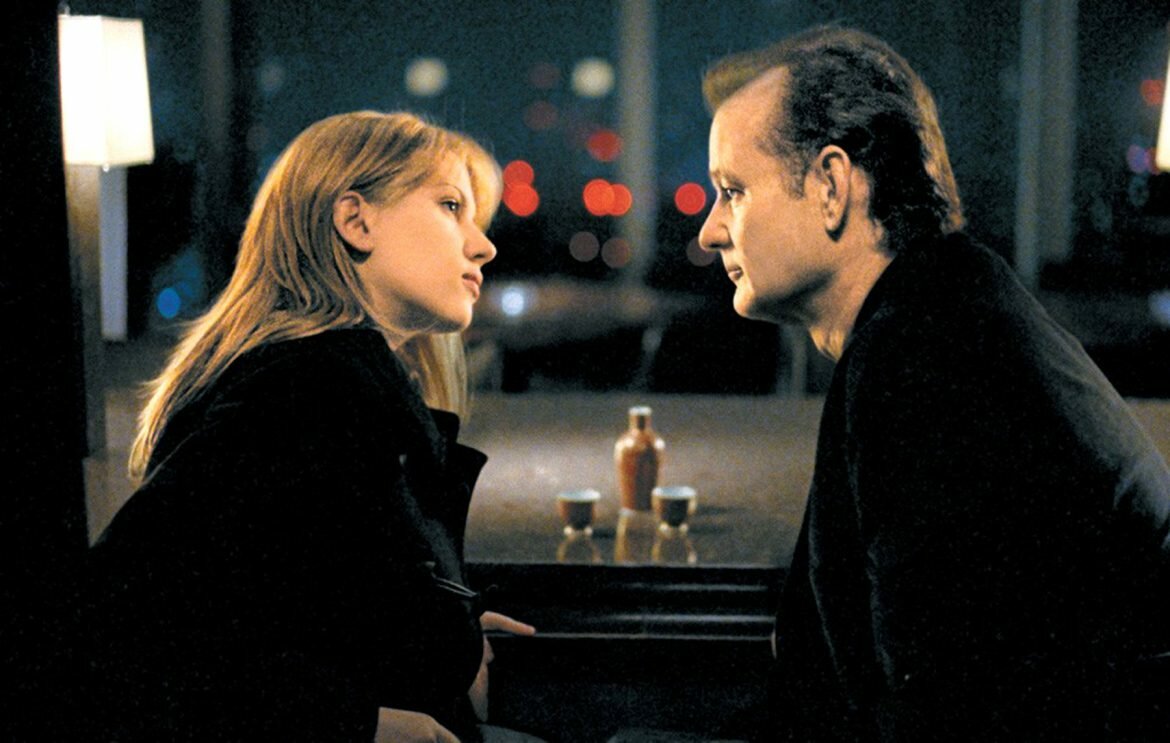Is Lost in Translation one of the greatest films of the noughties or among its most overrated? Ottilie Wilford looks into why Sophia Coppola’s second film seems to attract and repel in equal measure. What some see as a film of flawless character development and dialogue others deem as self-indulgent and pretentious.
A polarised response is often seen as a sign of great art – let’s not forget that Picasso’s Les Demoiselles d’Avignon was as loved as it was loathed when first revealed. Lost in Translation contains no ‘plot’ as such, the characters say very little and the pace is slow and wandering, giving the ‘haters’ what they see as their right to label it a ‘boring’ film in which ’nothing happens’. Nonetheless, I believe that like those who saw fault in the contorted, jagged angles of Picasso’s women, they find error in everything that makes it great. Poetry, as Robert Frost said is ‘what gets lost in translation’.
Lost in Translation handles heavy subject matter lightly. Dialogue and encounters that resonate deeply and darkly are cloaked in inconsequentiality. Much to her embarrassment Bob notices Charlotte’s CD ‘A soul’s search: Finding your true calling’, before admitting he owns the same thing. “Did it work out for you?” she asks; Bob doesn’t miss a beat: “Obviously”. Characteristic of the film, we laugh despite ourselves. The platitude-ridden, new age nonsense they are listening to and Bob’s self-deprecating response, is funny. However, the reality -that they have resorted to this to find some kind of meaning in their lives, is very sad. The poignancy of this exchange could easily go unseen. Likewise when Charlotte asks: “I’m stuck. Does it get easier?” while the two are lying next to each other fully clothed and on the brink of sleep, nothing about the setup mirrors the profundity of her question. Again the existential angst in what is possibly the film’s most moving scene is easily missed. Those who feel the film is insubstantial can only see the disguise it wears to make the truth underneath more powerful.
The film’s beautiful aesthetic also works to lull one into a false sense of simplicity. Lance Acord’s cinematography transforms a concrete jungle (Tokyo) into a mesmeric kaleidoscope of colours and shapes; the backdrop to Charlotte and Bob’s adventures. And yet Coppola seems to be saying that beauty is futile. Charlotte is uncommonly good-looking, her photographer husband creates beautiful things but she is not happy with herself or her relationship. Bob, though middle-aged, is aesthetically pleasing, but his looks mean he’s able to sell his soul advertising whisky when (as he admits) he “ could be doing a play somewhere”. Charlotte starts sobbing on the phone to a friend when describing a ceremony with Monks that she witnessed, tortured by how removed she feels from such a pure and beautiful scene. This display of detachment is part of the ennui that draws the two together. Both are haunted by the idea that life has locked them out of its magic and mystery, much like actors who have been forced to watch from the audience, aware of how much more alive they’d feel on stage. Their lives may not be beautiful by the end but by they learn how to be more optimistic with their imperfect existence. The film may be wrapped up in a gorgeous aesthetic but its beauty is by no means only for superficial, decorative purposes.
Central to the magic of Lost in Translation, and the main reason why people think that ‘nothing happens’, is that the script gives so little away. Nowhere in the film is this idea more prevalent than in the closing scene. In David Lean’s classic Brief Encounter (1945), minutes before Alec must board a train to South Africa and away from Laura forever, busybody Dolly Messiter interrupts, mindlessly babbles and prevents the lovers’ precious last words to one another. As we watch them separate for the last time and are engulfed by Rachmaninoff’s haunting, heart-breaking score – the goodbye we imagine they’d like to say is what produces this legendary tragic ending. Similarly, Coppola’s farewell is poignant because we never hear the protagonists’ goodbye. In this case however the silence is literal; we see them whisper to each other but are deliberately unable to make out what they are saying. Someone told me lip-reading reveals Bob telling Charlotte “Don’t forget to stop breathing”. I love the idea that they’ve both taught each other how to live again so all is not lost. More thrilling is that this is not definitive, meaning I can believe rather than know what Bob has said. The muteness at this momentous moment means the “words” uttered become a secret shared only by Bob, Charlotte and I, rather than common property for everyone who watches the film. The same idea applies to the scene when Charlotte ties her wish to the wishing tree; the camera films her expression rather than what she has written, meaning the viewer can be the author of her heart’s desire.

Being flooded with a gush of feelings one encounters so often in concluding scenes of more conventional tales of ‘lovers-forever-parted’ would jar with a film where emotions are to be strictly seen and not heard. The closest we come is Bob assuring Charlotte that she’s “not hopeless”, or Charlotte’s short but poignant “I’ll miss you”.
The ‘unsaidness’ creates a more intimate response with the viewer in which they literally have to read their own script into the space between the words. It’s the antithesis of nothing happening. Those who feel nothing happens appear to have no comprehension that this kind of encounter encapsulates a vast majority of our daily interactions. If nothing happens then nothing really happens in daily life unless you have the imagination to read through what is unsaid. Actors like James Dean, Greta Garbo, in more recently maybe Carey Mulligan or Joaquin Phoenix, are most captivating when they are silent. Their magic is that we create for ourselves the thoughts, fears and dreams that make up the inner life of their characters. As we can take more from what we’ve made our own, the people they play stick in our minds long after the credits.
“The absence of limitations is the enemy of art.” While Orson Welles probably meant this to explain the conditions that an artist needs to create, the sentiment should be applied to the other side of the canvas too, so to speak. When films make things difficult for us, we the viewer are forced to be creative, more imaginative, more empathetic. This is why Lost in Translation is the opposite of boring; it is one of the most exciting films ever made.




